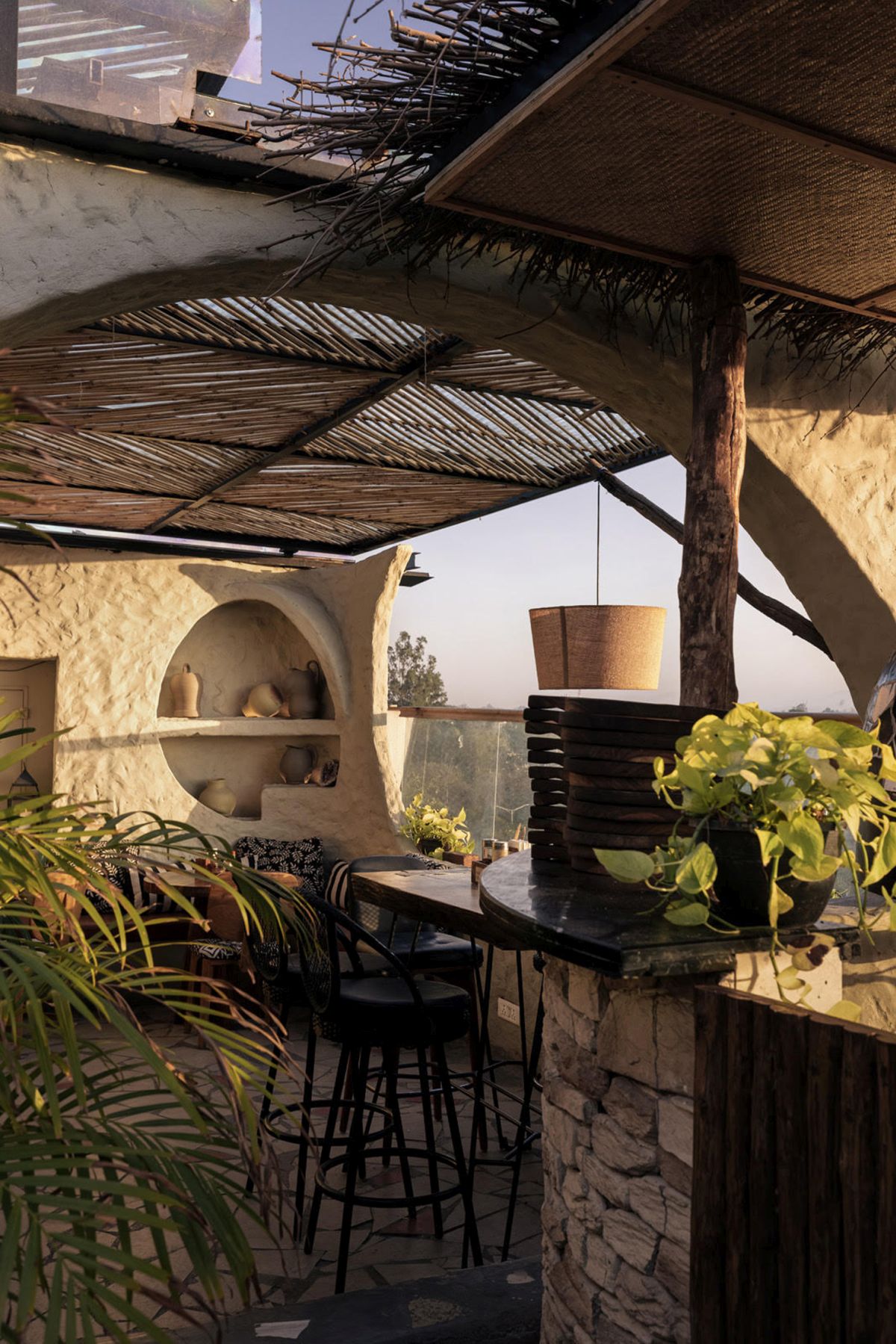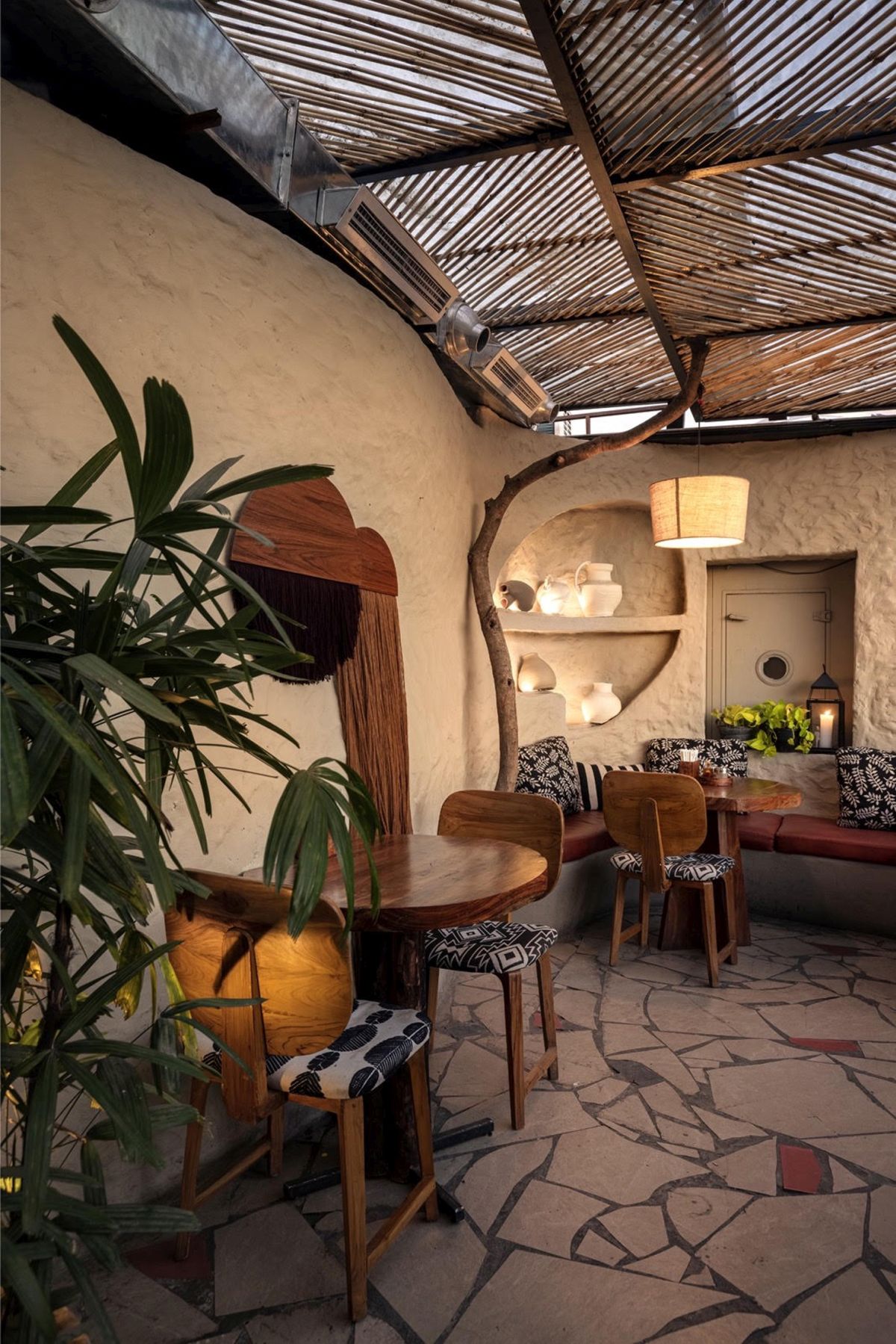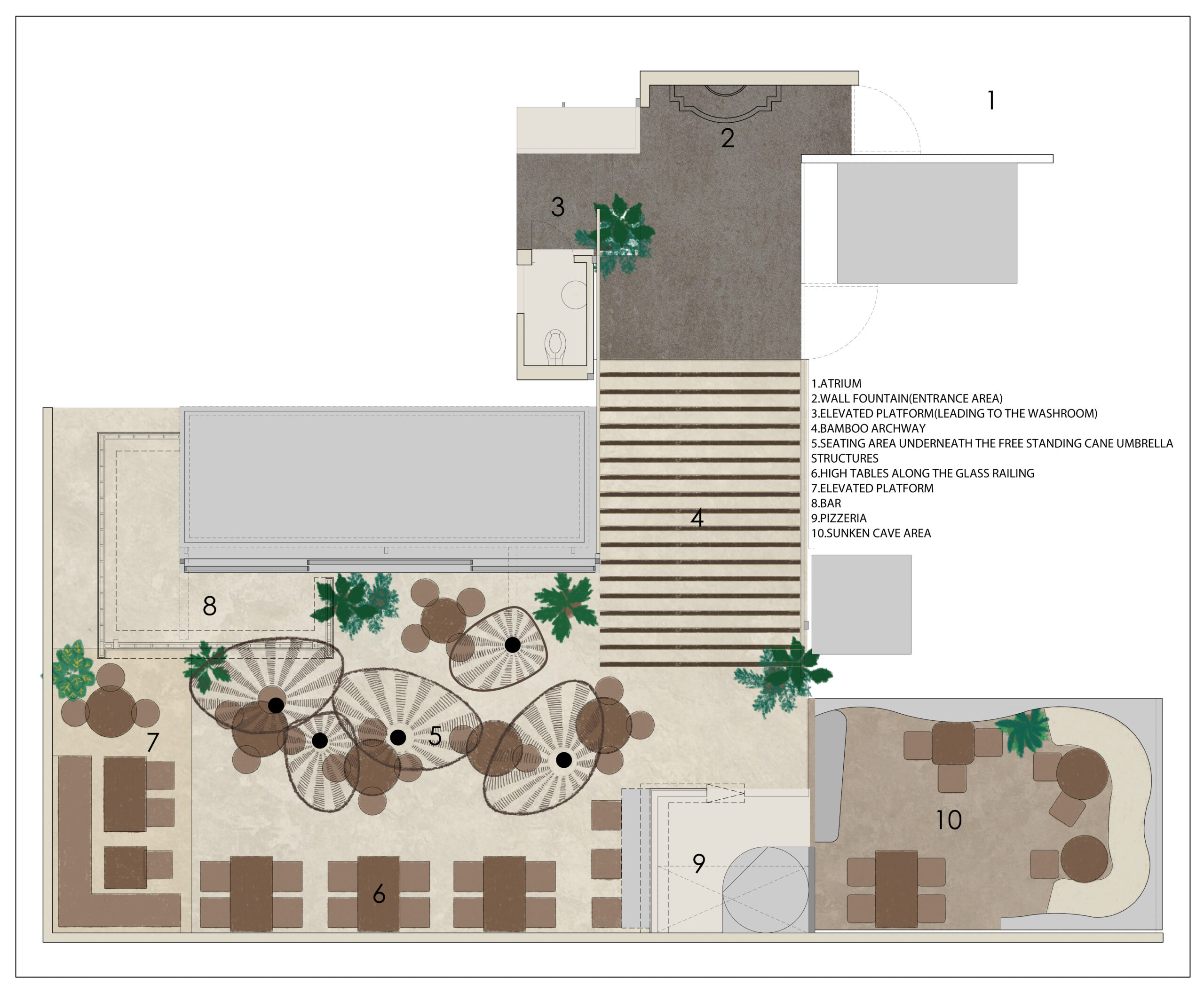Tulum is an experimental paradox in the brutalist context of Chandigarh. It is a rooftop restaurant that offers panoramic views of the city skyline. Drawing its inspiration from the Mexican getaway destination by the same name, Tulum is curated as a superfluous, green and vernacular oasis. The design reflects a natural and an earthy undertone that comes together in a systematic fashion using natural stone, bamboo, terrazzo, wood, cane, plaster and greens.
The story starts unfolding from the entrance atrium adorned by bamboo wainscotting and ethnic abstract ornamentation. A shower of cane light fixtures from the ceiling creates a surreal vibe as one moves closer to the restaurant. The entrance axis is a sensory and an experiential bliss that comprises of a water cascade and a bamboo arched passage that frames and encompasses the view. The narrow bamboo gateway opens up into a cozy and dynamic seating area. The dreamy set up consists of freestanding cane umbrella structures supported on actual tree trunks that create a semi permeable super structure above.
The envelope is an architectural and an aesthetic injection to the space and fulfills its function as a shading device to cut down the sun. The restaurant has an open pizzeria and a bar on opposite corners that are created using an organic material pallette of mosaic, stone, cane and wood. A section of the restaurant is designed as a cave like corner that has undulated walls created in mud plaster.
The curvilinear walls warp the rigidity and create a free-flowing volume where surfaces transform themselves into niches and benches. The corner radiates its own energy yet coming together in a fluid fashion with the rest of the space. Tulum is an ode to nature and the vernacular with an aim to create a different eating experience for the people of the city.
Layout –
Project Facts –
Design Firm: Loop Design Studio
Lead Architects: Ar. Suvrita Bhardwaj, Ar. Nikhil Pratap Singh
Location: Chandigarh, India
Architects: Loop Design Studio
Area: 1750 sq. feet
Year of construction: 2020
Photography: Purnesh Dev Nikhanj
Client: Saanya Verma and Akshay Verma



























3 Responses
This architectural design perfectly reflects the essence of Tulum, a paradise destination surrounded by nature, culture and charm.
Undoubtedly the design is one of the best, it is suitable for the environment in which Tulum is located, it complements the nature and the environment.